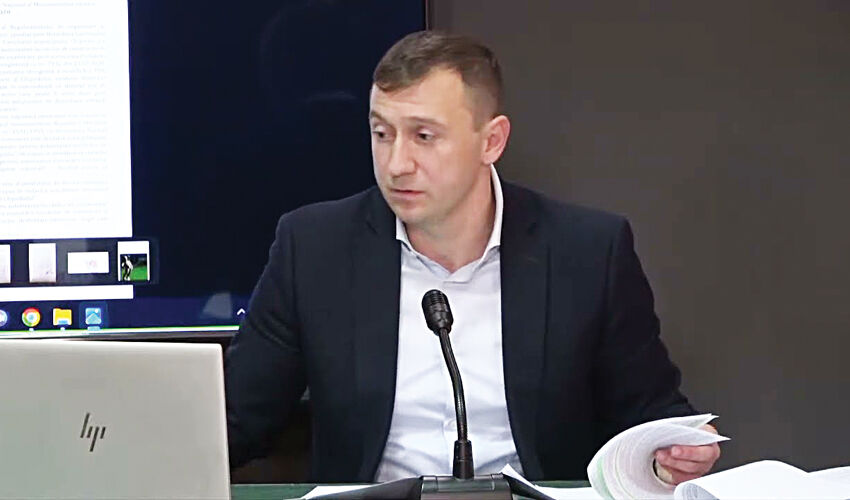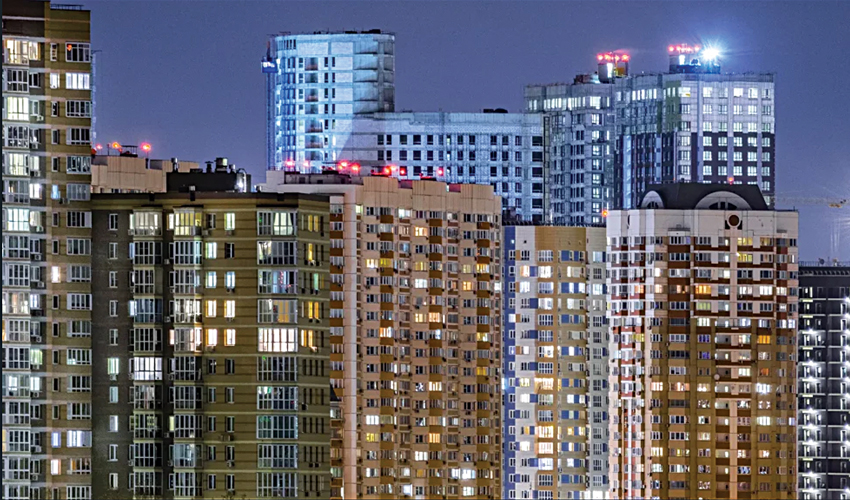
Roman Gunyavy
The Mayor’s Office announced in 2020 that it would create a register of unfinished construction projects in the city and develop economic leverage against negligent owners. An attempt to deal with the problem was made in 2023. At that time, a working group was even created to make an inventory of unfinished constructions in Chisinau. The preturas were entrusted to deal with the fate of objects that had been mothballed and/or abandoned for more than three years. They promised to check all the authorization documents issued to the customers and to send the information to the Department for collection of local taxes. But no one has ever seen the result of these actions.
“It is not easy to determine how many unfinished constructions there are in the city, we need monitoring,” says Dmitry Teraburke, a real estate expert. – Especially when it comes to residential construction projects. When the alarm began to sound, the administrators of the insolvency process decided that money loves silence and stopped disclosing information.
He believes that the problem with the housing construction in Chisinau will grow like a snowball because of the difficult macroeconomic situation in the country today. All our construction is concentrated in Chisinau, and it can no longer cope with this load.
“Now with mortgages is not as good as it used to be. And those who at the “warm-up” of the market invested money in construction, have chances to get a gap in financing – says Dmitri Tereburke. – This is the key reason for the emergence of under-construction. The second factor affects less, but it also matters – prices for construction materials are rising, there is not enough labor, hence the production gap. In addition, with the rising interest rate on loans and the increasing cost of utilities, housing on mortgage is no longer so attractive. This may lead to a decrease in demand. In addition, there is a growing migration of population, including from Chisinau. Therefore, I think that the problem will only become more acute”.
In Chisinau there are still skeletons of houses from 2000-2010. The city needs to do something with them. But there’s disputed land, overdue documentation, court cases. This is an institutional problem.
According to the expert, a lot depends on the city. Given the scarcity of land, it will address this problem, but only in cases where there are fewer disputes, although this is not very correct. The city authorities can conduct an inventory, make a public register indicating the readiness of construction, legal status, work out the routes of construction, simplified procedures. Among other things, there should be a program to protect shareholders, but we do not have it.
Therefore, court cases on claims of defrauded investors, who invested in construction, last for years. It is good when the problem is solved in their favor, as it happened with the buyers of apartments in the houses “Palm and Star” in the Chiocana sector. Construction began in 2007 and in 2015, the project was declared insolvent. What followed was a legal epic, protests by investors and almost dashed hopes of getting apartments or getting their money back. But 10 years later, the project was restarted, construction resumed in 2024, and people gradually began to receive the keys to their new apartments. Unfortunately, there are only a few such examples.
Abandoned construction sites not only distort the face of the city, but also freeze significant financial resources and generate lost economic benefits for both businesses and the city treasury.
“In order to incentivize the completion of the project, it is necessary to introduce certain sanctions. And the main measure is increased taxation,” says Roman Gunyavy, a real estate development specialist. – Or, at least, it is necessary to isolate under-construction, which uglifies the city. In such cases, a fence, various banners and nets are put up to hide the unsightly picture. This practice is implemented in many countries.
But first of all, there should be initiatives to change legislation and building regulations. This should come from the city authorities, or at their request to change the legislation in Parliament. Because the usual declarations, as a rule, do not lead to anything.
“It is necessary to change the practice so that business, owners of objects understand that the authorization for construction has a term during which they must implement the project, – says Roman Gunyavy. – If they do not meet the deadline, they are subject to certain sanctions. There is a practice in European countries, when taxes or payments for the right to conduct construction are increased several times for delayed construction. In addition to the fact that this incentivizes the reduction of the investment period, it motivates to reduce the period of construction works. Because any construction work is an inconvenience for urban mobility”.
In his opinion, no one thinks about it at all in our country. But in European countries there are already implemented practices, when the increase in construction payments stimulates the use of new technologies and more efficient management. Not only in the field of investments, but also in the operational activities of construction companies. Unfortunately, we have not adopted this experience.
Incomplete buildings occupy land plots, the number of which in the city is already limited. That is why both in our country and abroad it is mostly about redevelopment. This is a global practice – not to build anew, but to remodel what exists either partially or completely.
An example of redevelopment is the office center on Stefan cel Mare Avenue, which appeared on the site of the frame of an unfinished hotel. This object changed ownership several times. Finally, the construction company Urbanconstruct-TT undertook to complete it. The expert examination of the nine-storey building showed that it was in good condition and could be completed. But according to the customer’s decision, the building changed its functional purpose and was redesigned into a high-class office center.
It is still difficult to say how the fate of the second monumental unfinished building on Stefan cel Mare Avenue – next to the Opera and Ballet Theater – will turn out. The building, which was started to be built by Ascom Group in 2010, was supposed to be a class “A” office center. Subsequently, it was transferred to Moldinconbank on account of the company’s debt due to non-repayment of loans. In September 2021, the building (together with the land plot) was sold to Nova Lines Inc. So far, the new owner has not announced any plans for the completion of the facility or its redevelopment.
According to Roman Gunyavoy, today we have to talk about redevelopment mainly not of frozen construction sites, but of buildings built 10-20 years ago or in Soviet times, which today do not meet modern requirements. Land plots for construction are becoming increasingly scarce, so the revitalization of the entire territory and the redevelopment of outdated buildings is becoming topical.
For example, the Megapolis shopping center was completely rebuilt when it changed its owner. Today’s building is radically different from what it used to be. Among the unfinished constructions, experts cite the example of a “long-playing unfinished building” in the Chiocana sector near the Fidesco store. Today it is one of the most beautiful facades of a commercial building in the city. On Sculeni, the former building of the Artima factory was completely transformed into an office center – also the result of a rather successful project.













